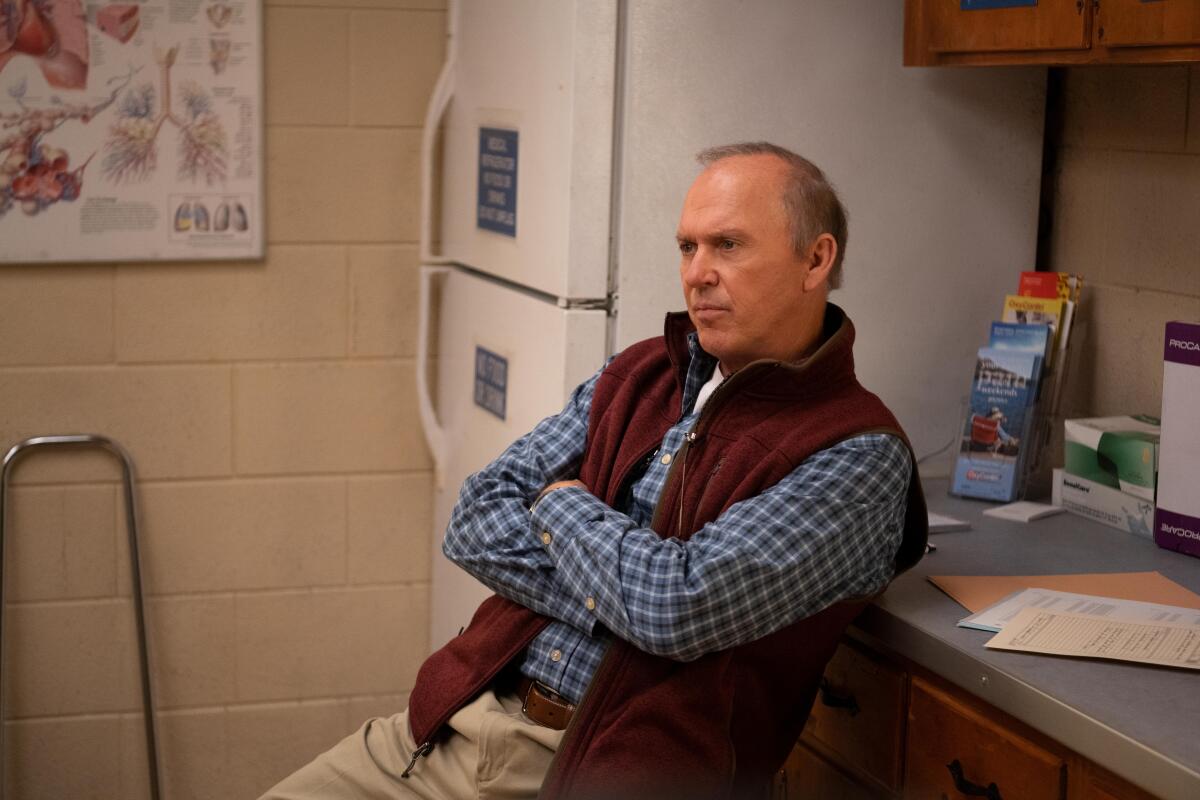‘Dopesick’ tackles the opioid epidemic from all sides

When “Dopesick” creator-showrunner Danny Strong (“Game Change,” “Empire”) first wanted to tell the story of the opioid epidemic’s roots, he knew it would have to be a multilevel, multilayer constellation — from the offices of drug company Purdue Pharma to those whose lives were destroyed by OxyContin.
“There’s this intense crime story,” says Strong, “about this corrupt company that is completely pathologically dishonest. And then at the same time, by dramatizing their victims in this small coal town, there’s this other story, which is thinking about addiction a different way. We tend to view these people in the most negative light, when in fact they’re victims of this company. I thought that could be a really powerful juxtaposition.”
The eight episodes Strong oversaw for Hulu weave together a handful of storylines: the machinations of the Sackler family inside Purdue; the early investigations into their practices as opioid dependence courses through Appalachia; one family’s struggle with a daughter’s addiction; and a small-town doctor’s journey after being manipulated by brazen pharmaceutical reps.
Rosario Dawson, who plays a Drug Enforcement Administration agent with an early bead on Purdue as a dangerous drug company, calls “Dopesick” and its muckraking approach toward the Sackler family a necessary corrective to what Americans have been fed about OxyContin and opioid abuse. “The Sacklers have been funding the conversation for a really long time,” she says. “This is the largest counternarrative push that has existed in decades.”

With such a far-reaching story of deceit, greed, and desperation to tell, featuring a well-heeled family at one end and impoverished addicts at the other, Strong knew viewers would want answered a big but basic question: How did this happen?
“A friend of mine told me about a doctor who had become addicted to OxyContin, and then was hiding it from his patients, and I thought, ‘Wow, that’s a great character; that’s a great way into it,’” says Strong, who found two more such stories in his research.
Beth Macy, author of “Dopesick: Dealers, Doctors, and the Drug Company that Addicted America” then introduced the writers room to a doctor who’d abused pain pills, who then became a source for the character of Samuel Finnix, a doctor played by Michael Keaton. Strong adds, “A lot of anecdotes in the show are directly from his experience.” He also said the show accurately reflected his experience, Strong says.
For Keaton, returning to episodic television after so long (the 2007 limited series “The Company”) wasn’t that big a shift from headlining a feature; to accommodate his busy schedule, he was able to shoot all his scenes in a shorter time frame. Not that it was easier. Finnix goes from beloved coal region doctor to Purdue-manipulated over-prescriber to addict, then has to claw his way back from ignominy.
“There would be days when you’re shooting Episode 6, and that afternoon go back and do something from Episode 3, then maybe 4,” says Keaton. “Just to honor the emotional, psychological and almost geographical track of this guy was difficult.”
He likened the experience to filming the 1996 clone comedy “Multiplicity,” in which he played four versions of a character, often in the same scene. “Dopesick” wasn’t as technical a challenge, but more a case of always keeping knowledge of Finnix’s arc at bay to preserve in-the-moment reality. “I never really like to know too much of where the character is going, because then you kind of anticipate things, and you start to ‘act.’”
When he talks about Keaton’s portrayal, Strong sounds like he keeps needing to pinch himself. “The juxtaposition of that kindness in the first few episodes and the manic intensity of the addiction journey is an undeniable performance as powerful as anything I’ve ever worked on,” he says.
Strong recalls being on set marveling at Keaton in character as Finnix in a scene with Will Poulter’s pushy pharma rep, adding a bit of addict-in-withdrawal shakiness to the opening of a newly manipulative OxyContin pamphlet. “I remember my mouth covered, I was so riveted. It was like the entire story of the opioid crisis in that single moment, a doctor who’s addicted because of the lies of a sales rep, who’s telling another lie. And he can’t even open the pamphlet for the new lie because the previous lies have damaged and destroyed him. My mind was blown.”
Though Dawson’s character, Bridget, is on the side of justice and righteousness, Strong wanted to give her a personal storyline that reflected the far reach of OxyContin in hurting lives. “I’d read a lot about how investigating the opioid crisis would really damage personal relationships, because they’d become obsessed and enraged by what Purdue was doing,” says Strong, who wrote a failed marriage arc for Bridget. “Relationships ended among people who never took a pill.”
Dawson didn’t talk to any investigators because, for the most part, the ones her character was based on wouldn’t open up to the production. “Danny called one,” she says, “who answered the phone, ‘No, no, no, no, no,’ and hung up, like, completely not interested, so burned by the experience, and I thought that was very telling.”
Bridget is gung-ho but not politic in her battle to turn evidence against Purdue and the Sacklers into action, and Dawson loved that aspect of the character.
“You get to watch her climb into a higher and higher position of power and actually use that power for good,” she says. “She isn’t able to win every person in the room, but she is present. She is engaged. She’s passionate. And she’s right.”
More to Read
From the Oscars to the Emmys.
Get the Envelope newsletter for exclusive awards season coverage, behind-the-scenes stories from the Envelope podcast and columnist Glenn Whipp’s must-read analysis.
You may occasionally receive promotional content from the Los Angeles Times.








